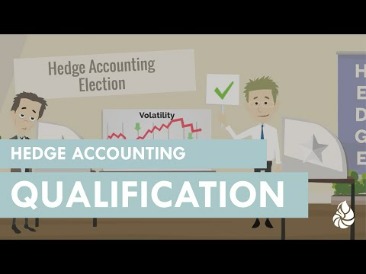
The objective of IAS 22 (Revised 1993) is to prescribe the accounting treatment for business combinations. The Standard covers both an acquisition of one enterprise by another (an acquisition) and also the rare situation where withholding allowance definition an acquirer cannot be identified (a uniting of interests). In the note 10 (not reproduced here) referred to on the balance sheet one would notice that goodwill is amortized over a period of between three and forty years.
Furthermore, the value of existing business activities can itself be thought of as the current balance sheet value of (net) assets plus the added value derived from the way those assets are utilised i.e. their profitability. If returns earned on the existing asset base are above the cost of capital, then current business value should exceed current balance sheet net asset value or book value. The difference is often referred to as the present value of economic profit, although only economic profit that is derived from existing business activities. The problem is that most intangibles are self-generated rather than purchased and the majority of these are not recognised in the balance sheet. Valuable intangibles that have ongoing use in the business, and that will contribute to future profits, are essentially ignored in financial reporting and any amount spent on creating or enhancing these assets is immediately expensed. Few people seem to be satisfied with intangible asset accounting; depending on your perspective, there is either not enough or far too much of it.

I think if you get an idea of the difference between the two you will be in a better position to understand why it arises and what exactly does it mean. NGW is important to track because it provides investors with a more complete picture of a company’s value. These types of deals were most frequent during the preceding financial crisis, as there were so many troubled sellers wanting to sell their companies.
Equity Purchase Price
To further confuse matters value can also be regarded as the characteristic of cheapness based upon one or more valuation metrics. This obviously overlaps with the idea of assets-in-place but the emphasis is on selecting stocks with low multiples rather than necessarily high assets-in-place. The term value investing may be used to describe the process of picking investments based on their estimated fundamental or real values that are estimated using valuation techniques such as discounted cash flow. The investments that offer the best value are those where the stock price is the lowest relative to the perceived fundamental value of the investment.
In allocating the purchase price to these assets and liabilities, we step, or write, them up/down to reflect their FVs. After December 15, 2008, acquisition-related costs are no longer included in the purchase price. Instead, the acquirer expenses these charges as incurred and the services received, while debt and equity financing fees continue to receive the same accounting treatment described above. But what index providers and quant-based investors could really do with is better accounting information about intangible assets and the related expenditure. However, if your approach to investment and portfolio construction is based on ‘factors’, ‘styles’ and data-driven analysis then intangible asset accounting may be much more of a problem, particularly if you favour (or wish to avoid) ‘value’ stocks.

However, a few years later, that company had to lay off a significant number of employees due to a recession. Customer base loyalty, market share, and supplier relationships are other examples of goodwill assets. Recording negative goodwill – as well as goodwill – is required by all companies.
Tax Deductions for Large Purchases
Goodwill arising in a company’s own accounts and goodwill arising on consolidation must be accounted for in accordance with FRS 10. This treatment will require use of the true and fair override, as company law requires all goodwill to be amortised. For financial reporting purposes, an upward valuation of tangible and intangible assets, other than goodwill, raises depreciation and amortization expenses, which lowers operating and net income. For tax purposes, goodwill created after July 1993 may be amortized up to 15 years and is tax deductible. Cash-flow benefits from the tax deductibility of additional depreciation and amortization expenses are written off over the useful lives of the assets.
- One year later, due to an economic downturn in that industry sector, management is assessing whether the unit has incurred an impairment of its net identifiable assets.
- This assumes that the acquirer paid more than the target’s net asset value.
- Generally, the reporting unit has no shares trading on a public exchange.
- The Standard covers both an acquisition of one enterprise by another (an acquisition) and also the rare situation where an acquirer cannot be identified (a uniting of interests).
This usually happens because of an external economic event or a change in the competitive landscape. Specifically, goodwill is considered a long-term intangible asset because it represents nonphysical value, which can refer to things like brand recognition, strong supplier relationships, and a loyal customer base. There are several reasons you can use to justify paying a premium for getting what you want (or need), and the same is true in business acquisitions. Sometimes, one company is willing to pay a premium to acquire another, and that premium is referred to as goodwill.
However, now it is recognized as a gain in P&L A/c in the year of acquisition. Negative goodwill is an accounting principle that occurs when the price paid for an asset is lower than its value in the market and can be thought of as a “discount” to the buyer. Negative goodwill is the opposite of goodwill, where one company pays a premium for another company’s assets. Tango’s book and tax balance sheets are identical and as shown in the spreadsheet below.
.css-177mjipposition:absolute;opacity:0;top:calc(-72px – 20px); Why is goodwill important?
This gain is materialized as an addition to the net income in the income statement. Negative goodwill typically arises when the money paid to buy an asset or a company falls short of its fair value in the market. On the flip side, positive goodwill – also referred to as goodwill (GW) – occurs when the money paid to buy an asset or a company exceeds its fair value in the market. Just like NGW, there are no other means to increase GW unless the company engages in mergers and acquisitions (when a company purchases another company or if two companies merge, forming a separate firm). Arises whenever the amount of money paid by a company to purchase another company or its assets is less than their fair market values.
- This gain is materialized as an addition to the net income in the income statement.
- The difference between the sum of the fair values and the purchase price (or the fair value of any consideration given up) is classified and recorded as goodwill.
- It would solve the problems of the index providers in determining adjusted book to price ratios and provide all investors with the potential to view other metrics on an intangible asset adjusted basis.
- I think if you get an idea of the difference between the two you will be in a better position to understand why it arises and what exactly does it mean.
All of these assets are noticeable, but none of them are physical assets. Thus, when a company acquires another company, it can sometimes pay more than the book value of the firm’s assets and liabilities. Goodwill accounts for the value of the intangible assets – such as brand recognition and intellectual property – which can be highly valuable for well-established and/or innovative companies. Intangible assets are not included in the calculation of the market value but may be included in the purchase price.
Negative Goodwill and Positive Goodwill Comparison
However, for tax purposes, the write-ups/downs are treated differently depending on the type of acquisition. In an asset acquisition, as in Example 2.3, Tango’s net assets are written up for both book and tax purposes. In a stock acquisition, on the other hand, Tango’s net assets are written up for book purposes but not for tax purposes. Like many, we do not think that comprehensive capitalisation of intangibles in the balance sheet is feasible or desirable; the measurement challenges are just too great. Although disclosure, such as that above, would also be subjective and potentially lack comparability, we think it would still very useful for investors. It would solve the problems of the index providers in determining adjusted book to price ratios and provide all investors with the potential to view other metrics on an intangible asset adjusted basis.
These materials were downloaded from PwC’s Viewpoint (viewpoint.pwc.com) under license. Marketable securities are valued at their realizable value after any transaction costs. Nurture and grow your business with customer relationship management software. You would doubt that even though the goodwill can have a negative balance how shall it be presented in the Financial Statements.
How can negative goodwill be avoided?
Goodwill can not be arbitrarily assigned internally, it should be purchased. The carrying amounts of assets and liabilities should be adjusted when additional evidence becomes available to assist with the estimation of the fair value of assets and liabilities at the date of acquisition. Negative goodwill (NGW), also known as the bargain purchase amount, arises whenever the amount of money paid by a company to purchase another company or its assets is less than their fair market values. In a rare bargain purchase, the excess just defined must be immediately recognized by the acquirer in earnings as a gain that increases goodwill from a would-be negative value to zero after in accordance with FAS 141r. FAS 141 had required that any negative goodwill be allocated pro rata to the acquired assets, reducing their allocated FVs to zero. Any goodwill remaining following the pro rata allocation must then be recorded immediately as an extraordinary gain.
Building Trust, Building Business: How Trust Drives Customer Success – Newsweek
Building Trust, Building Business: How Trust Drives Customer Success.
Posted: Mon, 28 Aug 2023 13:10:05 GMT [source]
Negative goodwill, also known as bargain purchase gain, occurs when the fair value of the net assets acquired in a merger or acquisition exceeds the purchase price. This means that the buyer paid less than the intrinsic value of the target company, and therefore gained an instant profit. In this article, you will learn about some examples and implications of negative goodwill in mergers and acquisitions. Different accounting GAAPs provide different treatments of bargain purchase value i.e. negative goodwill value. Under some GAAPs, the difference between net assets acquired and the purchase price is allocated to the cost of fixed assets(long-term assets) except for some. The value remaining after such allocation actively transfers to the profit and loss account as an extraordinary gain.
Negative goodwill should be recorded as income on the purchasing company’s balance sheet. To calculate goodwill, subtract the market value of the acquired company’s assets and liabilities from the price the company was purchased for. These intangible assets are hard to quantify and may not be used in calculating the fair market value of the target company, but they can still give the purchasing company a competitive advantage. FASB more formally defined NGW as “a business combination where the acquisition date amounts of identifiable net assets acquired, excluding goodwill, exceed the sum of the value of consideration transferred.” In addition, the Financial Accounting Standards Board (FASB), has clearly stated how to deal with NGW and GW in statement No. 141.
The Difference Between Impairment and Goodwill Amortization
Once purchased, goodwill is deemed to have an indefinite life and not amortized, but it is evaluated for impairment. Under IFRS, this is done annually and whenever there is an indication that impairment exists. For ASPE this is done whenever circumstances indicate that an impairment exists. There are many reasons why Otis was willing to pay an additional $2M to purchase Waverly.

